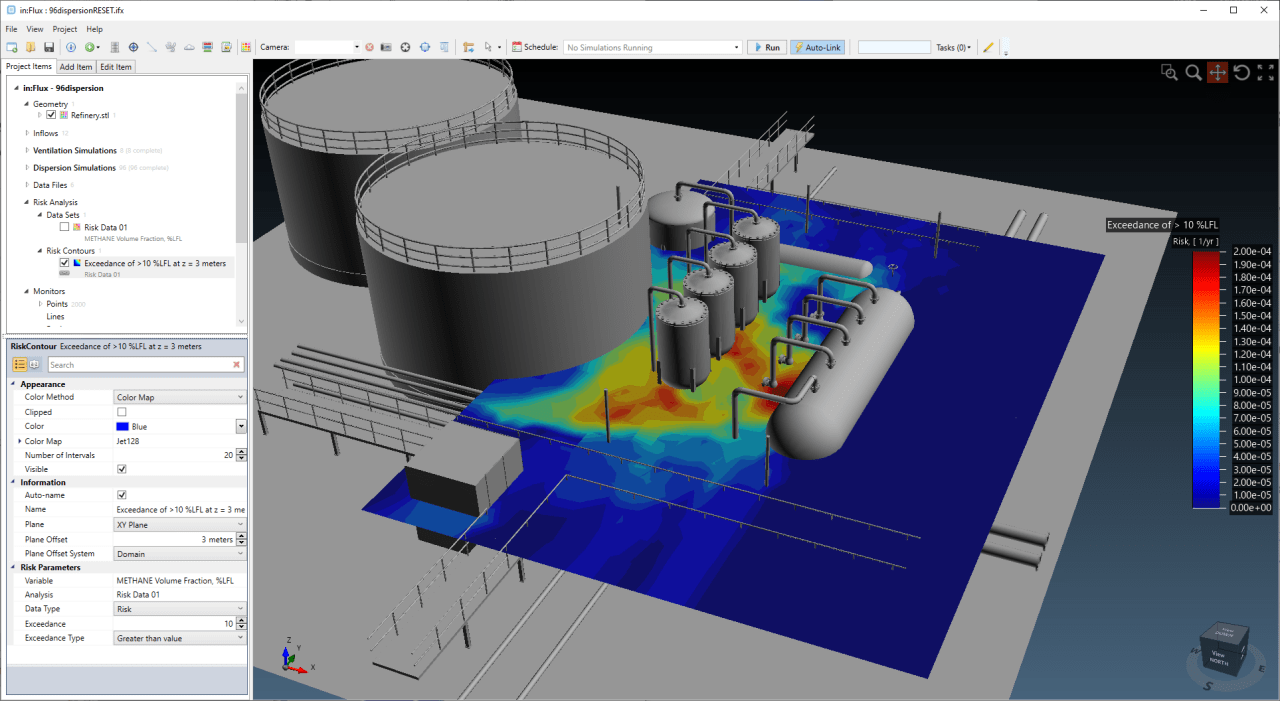There isn’t much doubt that the major technology change we will see over the next 10 years is Risk-Based Gas Mapping. The method has been around for a while (see ISA TR84.00.07 for example), but the proper commercial application using Computational Fluid Dynamics (CFD) has only been available for a couple of years.
Developing this capability at Insight Numerics has been an enormous challenge, but with several projects now complete we are at a stage with in:Flux that gas mapping projects with 10,000 CFD simulations are commercially viable.
What gives us the confidence that the future is with Risk-Based Gas Mapping?
- Cost. Risk-Based Gas Mapping results in fewer gas detectors, sometimes significantly fewer (30-50%), than the tradition spacing methods using spherical gas clouds. The reason that the traditional methods result in too many gas detectors is simple: gas clouds are not spherical, and assuming they are is overly conservative (it is more difficult to “detect” a sphere than a cloud with a realistic shape).
- Better Engineering. Cost reductions are backed up with an engineering method that is a huge improvement compared to the traditional method of using spherical gas clouds. This is a rare win-win for the industry: we are applying more accurate techniques and reducing costs.
Our CFD software, in:Flux, has been written with Risk-Based Gas Mapping in mind since the start. We have already seen several projects benefit from using this method, and we have learnt a lot ourselves. Over the coming weeks, I will be sharing some of those lessons, as well as taking a realistic view of what is currently possible, the benefits, pitfalls, and areas of research that we are now focusing on.

Find us